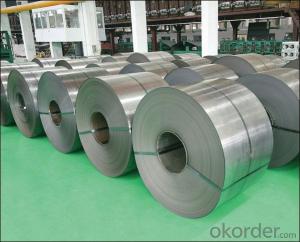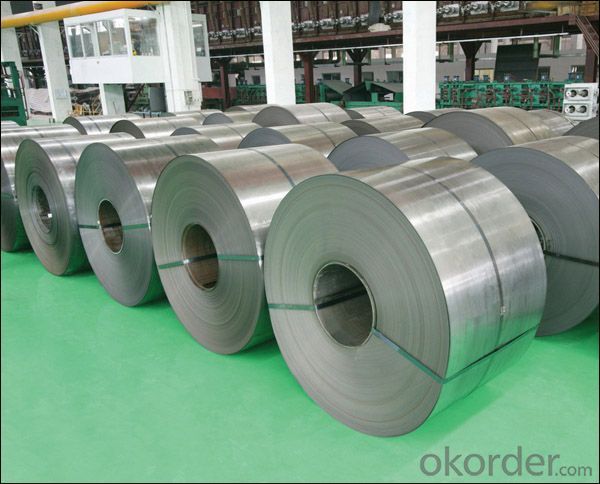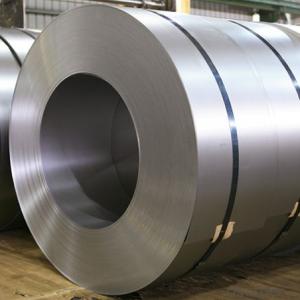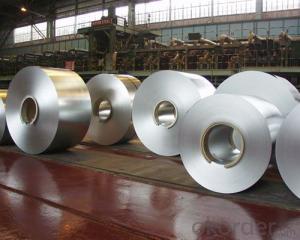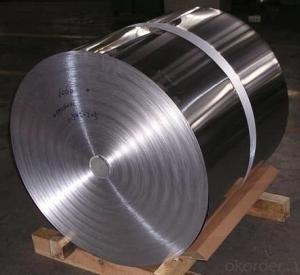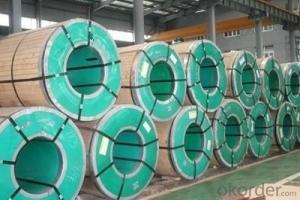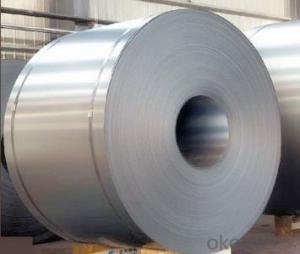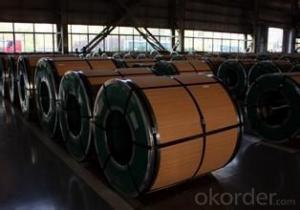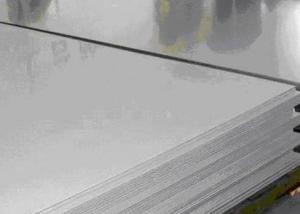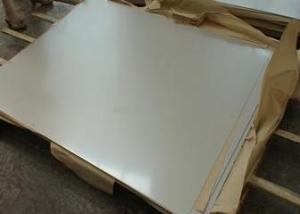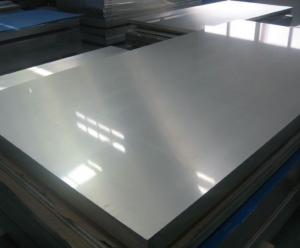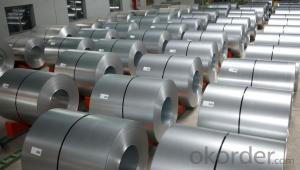Stainless Steel Coil and Sheet Hot Rolled Cold Rolled 201 High Quality
- Loading Port:
- China main port
- Payment Terms:
- TT OR LC
- Min Order Qty:
- 200 m.t.
- Supply Capability:
- 4000 m.t./month
OKorder Service Pledge
OKorder Financial Service
You Might Also Like
201 Stainless Steel Coil Hot Rolled Cold Rolled
201 Stainless Steel is a new kind of Austenite stainless steel by used Mn, N replace Ni. The steel has good corrosion resistance and hot / cold processing performance, instead of 304 stainless steel products for used in the not high of corrosive environment, such as indoor, inland city outdoor etc.
1. Product detail
Product name: 201 Stainless Steel Coil
Thickness: 0.2mm to 1.5mm
Technical: Cold Rolled
Width: 10mm to 1240mm
Type: 200 Series
Length: As customer's requested
Standard: JIS, SUS
Finish: BA, 2B, 8K, NO.3, NO.4, HL
MOQ: 200 Metric Tons
Ship Term: FOB Shenzhen port or CNF import port
Delivery Time: 15 to 20 day after the receive the deposit or LC
Packaging: By wooden pallet, wooden case or according to customer's request
2. Specialty and Applications
Steel Type | 201 Stainless Steel Coil |
Specialty | -- After solid solution treatment has high strength, toughness and wear resistance; Economical, low Ni components to ensure the cost advantage |
Applications | -- 201 Stainless Steel mainly used in decorated tube, Industrial tube and other shallow tensile productSuch as shallow processed pan, Indoor stair handrail, elevator etc |
3. Chemical Composition (Unit: WT %)
Specification | C | Si | Mn | Ni | Cr | other |
201 Stainless Steel | ≤0.015 | ≤1.00 | 7.0-10.0 | 3.5-5.5 | 14.0-16.0 | N ≤ 0.20 |
4. Mechanical Property
Specification | YS (Mpa) | TS (Mpa) | EL(%) | HV | REMAK |
201 Stainless Steel | 426 | 880 | 52 | 224 | 1.0t |
304 Stainless Steel | 285 | 710 | 58 | 165 | 1.0t |
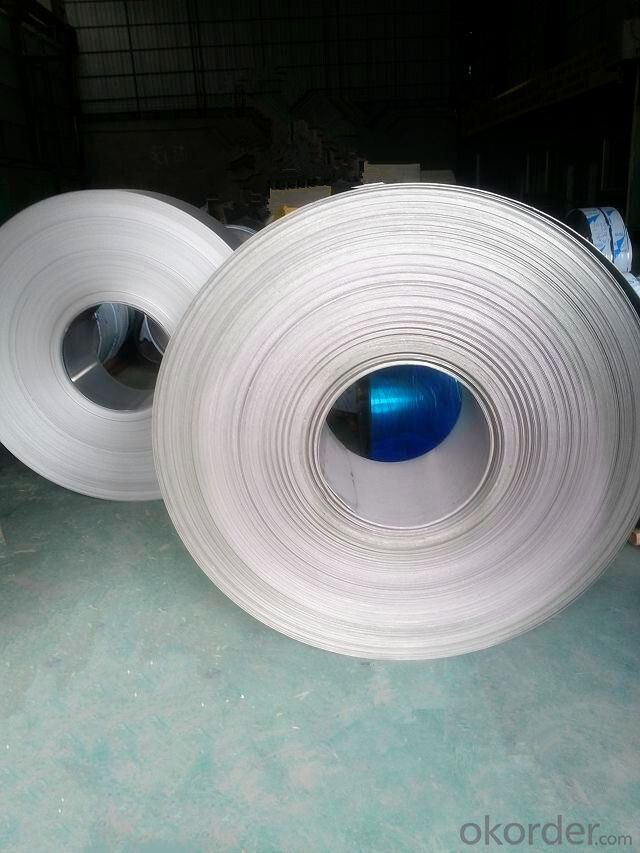
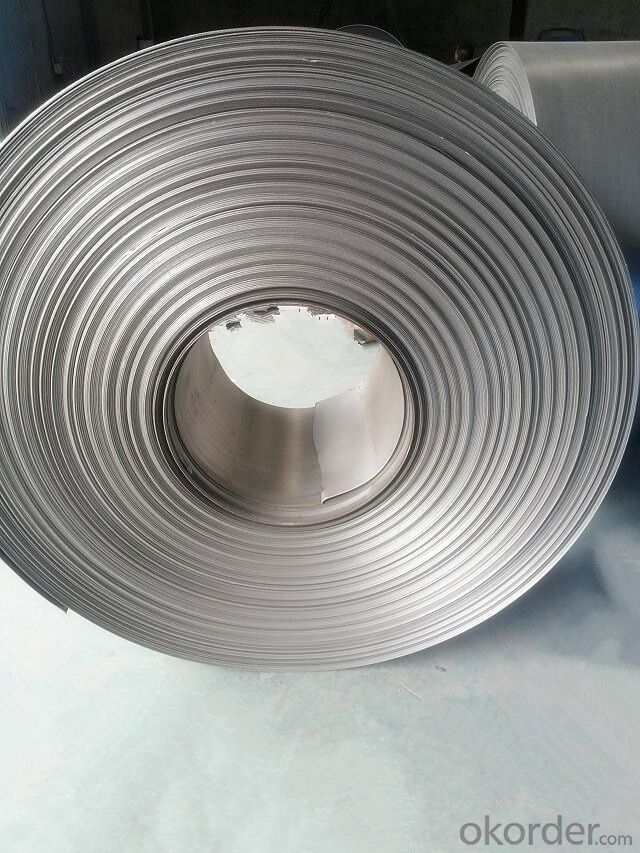
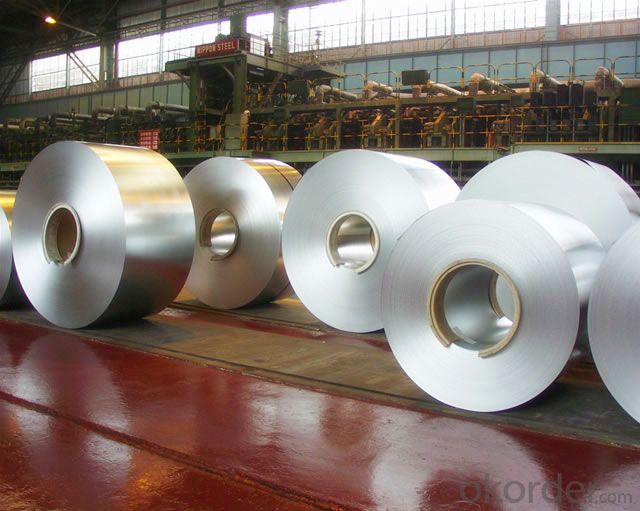
- Q: Are 111 stainless steel strips suitable for chemical storage tanks?
- No, 111 stainless steel strips are not suitable for chemical storage tanks. 111 stainless steel is not specifically designed to resist corrosion or withstand the aggressive chemical environments that are typically found in storage tanks. It is important to use stainless steel grades that are specifically designed for chemical storage applications, such as 304 or 316 stainless steel, which have higher resistance to corrosion and chemical attacks.
- Q: What are the different surface treatments available for stainless steel strips?
- Stainless steel strips offer a range of surface treatments, each with its own advantages and characteristics. Let's explore some of the most common options: 1. The standard untreated surface of stainless steel strips is called Mill Finish. It has a smooth and shiny appearance, perfect for those who prefer a natural, unaltered look. 2. Another popular treatment is the Brushed Finish, also known as satin finish. This involves brushing the surface with abrasive materials to create a matte texture. It not only adds a stylish touch but also helps to conceal scratches and fingerprints. 3. For a highly reflective surface, there is the Mirror Finish. Achieved through progressive polishing with finer abrasives, it creates a mirror-like appearance. 4. If you're looking for decorative patterns, the Patterned Finish is the way to go. This treatment involves embossing, etching, or laser engraving to achieve various designs and textures. 5. PVD Coating, or Physical Vapor Deposition coating, offers a thin layer of metallic or non-metallic material applied through a vacuum deposition process. This not only provides enhanced durability and corrosion resistance but also allows for different colors or a metallic appearance. 6. Passivation is a chemical treatment that removes iron contaminants from the surface, improving corrosion resistance. It utilizes acid-based solutions to clean and neutralize the stainless steel strips. 7. Electropolishing involves the removal of a thin layer of metal using an electric current. This treatment results in a smooth and shiny surface, enhances corrosion resistance, and eliminates embedded contaminants. 8. Lastly, stainless steel strips can be coated with materials like paint, epoxy, or polymers for additional protection against corrosion, abrasion, or for aesthetic purposes. These examples showcase the diverse range of surface treatments available for stainless steel strips. The choice of treatment depends on specific requirements such as desired appearance, corrosion resistance, durability, and functionality.
- Q: What are the common thickness tolerances for stainless steel strips?
- The specific industry standards and requirements can cause variations in the common thickness tolerances for stainless steel strips. Generally, these tolerances range from ±0.0015 inches to ±0.005 inches. These tolerances guarantee that the stainless steel strips adhere to the desired thickness specifications and maintain consistent quality during manufacturing. It is worth mentioning that the tolerances can differ based on the grade of stainless steel and the intended use of the strips. To fulfill their unique needs, manufacturers and customers frequently engage in communication and reach an agreement regarding the precise tolerances required.
- Q: What is the maximum length available for stainless steel strips?
- The maximum length available for stainless steel strips can vary depending on the manufacturer and the specific requirements of the customer. However, in general, stainless steel strips can be produced in lengths ranging from a few inches to several feet. Some manufacturers may be able to produce even longer strips, depending on their capabilities and equipment. It is important to consult with the manufacturer or supplier to determine the maximum length available for stainless steel strips that meet your specific needs.
- Q: What are the recommended safety guidelines for cutting 111 stainless steel strips?
- The recommended safety guidelines for cutting 111 stainless steel strips include wearing appropriate personal protective equipment such as safety goggles, gloves, and a face shield to protect against potential flying metal shards. It is also important to use a sharp cutting tool specifically designed for stainless steel, and to apply steady pressure and avoid excessive force while cutting. Additionally, working in a well-ventilated area or using local exhaust ventilation can help minimize exposure to fumes and dust. It is crucial to follow proper handling and storage procedures for the steel strips, and to consult manufacturer guidelines or seek professional assistance if needed.
- Q: What are the benefits of using 111 stainless steel strips over other materials?
- Using 111 stainless steel strips instead of other materials provides numerous advantages. To begin with, 111 stainless steel exhibits exceptional resistance to corrosion and oxidation, making it suitable for utilization in different environments, including those with high humidity or exposure to chemicals. This resistance guarantees that the stainless steel strips have a longer lifespan compared to alternative materials, thereby reducing the frequency of replacements and resulting in long-term cost savings. Furthermore, 111 stainless steel strips possess remarkable strength and durability. They can bear heavy loads and are highly resistant to wear and tear. These properties make them ideal for applications necessitating high strength and reliability, such as the construction, automotive, and industrial sectors. Moreover, 111 stainless steel strips offer superior heat resistance. They can withstand elevated temperatures without compromising their structural integrity, rendering them appropriate for utilization in extreme temperature conditions, such as in furnaces or industrial ovens. Additionally, stainless steel is a hygienic material that is easy to clean and maintain. It lacks pores, preventing the growth of bacteria, and is thus suitable for applications in the food and medical industries. Moreover, it is resistant to staining, ensuring a clean and visually appealing appearance. Lastly, 111 stainless steel strips are versatile and can be easily fabricated into various shapes and sizes, allowing for customization to meet specific project requirements. This adaptability makes them suitable for a wide array of applications, ranging from architectural and decorative purposes to structural components. In conclusion, the benefits of utilizing 111 stainless steel strips encompass corrosion resistance, strength and durability, heat resistance, hygiene, and versatility. These properties establish them as a preferred choice in numerous industries, guaranteeing longevity, reliability, and cost-effectiveness.
- Q: Are stainless steel strips suitable for food processing applications?
- Yes, stainless steel strips are highly suitable for food processing applications. Stainless steel is a popular choice in the food industry due to its excellent corrosion resistance, durability, and hygiene. It is non-reactive with food, meaning it will not contaminate or alter the taste of the processed food. Stainless steel strips are also easy to clean, maintaining a high level of sanitation required in food processing environments. Moreover, stainless steel has high strength and can withstand extreme temperatures, making it ideal for various processes such as cutting, slicing, and packaging. Overall, stainless steel strips are a reliable and safe choice for food processing applications.
- Q: Can stainless steel strips be used in elevator doors?
- Indeed, elevator doors can utilize stainless steel strips. Owing to its robustness, durability, and ability to resist corrosion, stainless steel stands as a favored option for elevator doors. These strips can enhance the visual allure of the doors, imparting a chic and contemporary look. Moreover, stainless steel is effortlessly cleaned and maintained, rendering it a pragmatic choice for elevator doors that experience regular usage and possible impact. Ultimately, stainless steel strips are an appropriate and frequently employed material for elevator doors.
- Q: Can stainless steel strips be coated with protective films?
- Yes, stainless steel strips can be coated with protective films. Protective films are commonly used to safeguard stainless steel surfaces during transportation, storage, and fabrication processes. These films are designed to provide temporary protection against scratches, abrasions, dirt, and other forms of damage. The films are typically transparent or translucent, allowing for easy inspection of the stainless steel surface while providing effective protection. They can be easily applied and removed, leaving the stainless steel strip in its original condition. Protective films are widely used in various industries, including automotive, construction, electronics, and appliances, to ensure that stainless steel products maintain their pristine appearance until they are ready for use.
- Q: Are stainless steel strips resistant to chlorine attack?
- Yes, stainless steel strips are generally resistant to chlorine attack.
Send your message to us
Stainless Steel Coil and Sheet Hot Rolled Cold Rolled 201 High Quality
- Loading Port:
- China main port
- Payment Terms:
- TT OR LC
- Min Order Qty:
- 200 m.t.
- Supply Capability:
- 4000 m.t./month
OKorder Service Pledge
OKorder Financial Service
Similar products
Hot products
Hot Searches
Related keywords
